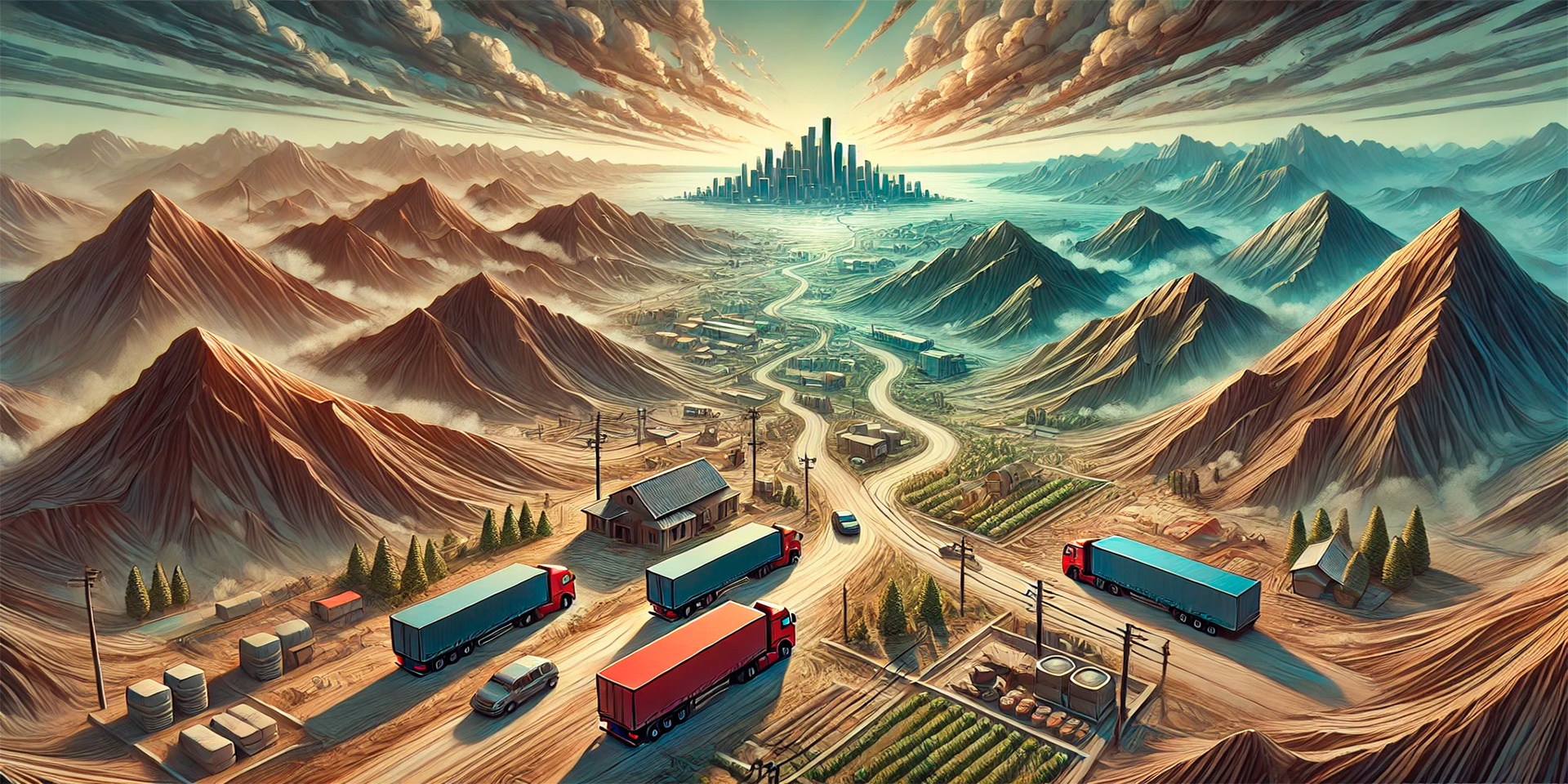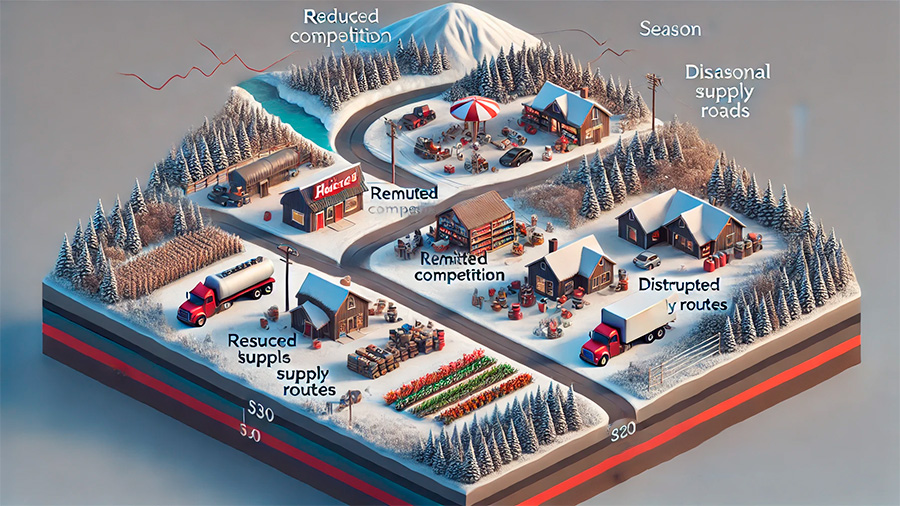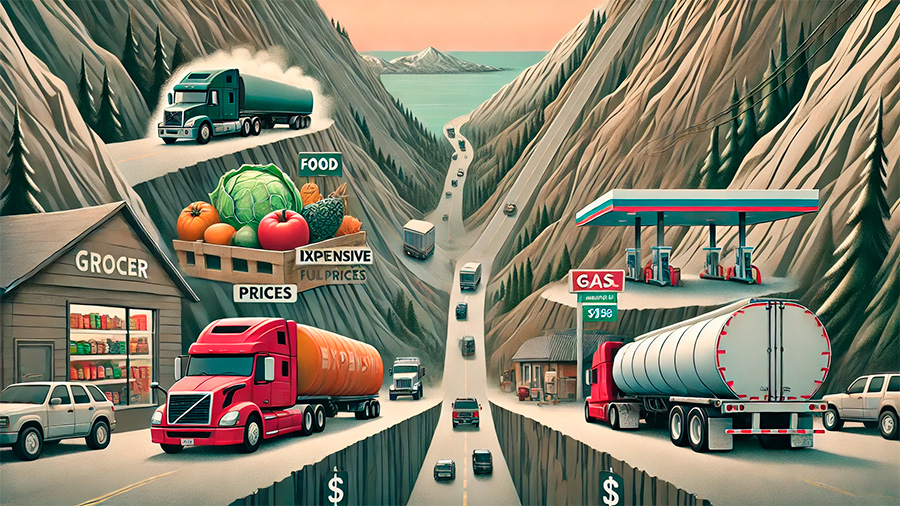
The High Price of Living in Remote Areas: Supply Chain Complexities Explained
Living in remote areas often means facing higher costs for goods and services. The logistics of transporting products to regions that are far from major supply hubs create unique challenges, leading to price increases that directly affect consumers. These higher prices can impact everything from food and fuel to essential services and construction materials, making it more expensive to live in remote locations.
This article explores why goods cost more in remote areas, the logistics challenges faced by businesses, and the factors that contribute to increased supply chain costs in these regions.
Why Supply Chain Costs Are Higher in Remote Areas
The cost of transporting goods is a significant factor in the overall price consumers pay. Remote areas, often located far from major transportation routes and suppliers, require longer and more complex logistics solutions to deliver products. This increase in logistical complexity directly affects supply chain costs, which are passed on to consumers in the form of higher prices.
1. Increased Transportation Distance
The farther goods must travel, the more expensive the transportation costs. Remote areas may be located hundreds or even thousands of miles away from manufacturing hubs, distribution centers, and seaports. As a result, transportation companies must cover greater distances, often involving multiple modes of transportation, such as trucks, ships, and planes.
- Fuel Costs: Longer transportation distances lead to higher fuel consumption, which increases the overall cost of delivering goods. This is particularly true in regions where fuel prices are already higher.
- Time and Labor: Transporting goods to remote locations requires more time and labor, adding to the operational costs of logistics providers.
2. Limited Transportation Infrastructure
Remote areas often lack the infrastructure needed to support efficient logistics. Poor road conditions, limited access to railroads, and a lack of nearby airports can make it more difficult and costly to transport goods. When transportation infrastructure is inadequate, companies may need to rely on alternative methods, such as small planes or boats, which are more expensive and less efficient than traditional trucking.
Additionally, weather-related challenges, such as snow, flooding, or storms, can further disrupt supply chains in remote areas, leading to delays and additional costs.
3. Smaller Economies of Scale
In remote regions, demand for goods and services is typically lower due to smaller populations and less industrial activity. This lower demand results in smaller economies of scale for logistics providers. When companies cannot transport large quantities of goods, they lose the cost advantages that come with bulk shipping.
- Less Frequent Shipments: With lower demand, shipments to remote areas are often less frequent, leading to higher per-unit costs for transportation.
- Higher Inventory Costs: Businesses in remote regions may need to hold more inventory to account for infrequent deliveries, which increases storage costs and can lead to higher prices for consumers.
The Impact of Supply Chain Costs on Prices
The challenges faced by logistics providers in remote areas lead to higher costs throughout the supply chain. These increased costs are passed on to consumers in the form of higher prices for goods and services. In many cases, the price of basic necessities, such as food, fuel, and building materials, can be significantly higher in remote areas compared to more urbanized regions.
1. Higher Food Prices
One of the most noticeable impacts of higher supply chain costs is the price of food. In remote areas, grocery stores and markets must pay more to transport fresh produce, meat, and other perishable items. Additionally, the limited availability of local food production means that remote areas often rely heavily on imports from distant regions.
- Perishable Goods: Transporting perishable goods to remote areas requires refrigeration and quick delivery times, both of which add to the cost. These goods often have higher markups due to spoilage risks and increased transportation expenses.
- Limited Supply Options: Consumers in remote areas have fewer shopping options, leading to reduced competition and higher prices from retailers.
2. Increased Fuel Costs
Fuel prices in remote areas are often higher due to the added costs of transporting fuel to gas stations and service providers. The lack of nearby refineries or fuel distribution centers means that fuel must be transported over long distances, often involving complex supply chains that pass through multiple hands.
Higher fuel prices affect not only transportation but also heating, electricity generation, and agriculture, further driving up the cost of living in remote regions.
3. Construction and Material Costs
Building in remote areas is more expensive due to the higher costs of transporting construction materials, such as lumber, concrete, and steel. The additional time and logistics involved in delivering these materials to construction sites can result in higher costs for both contractors and property owners.
- Labor Costs: In some cases, construction companies may need to import labor from other regions, further increasing the cost of building in remote areas.
- Limited Supplier Options: The lack of local suppliers means that materials must be sourced from faraway locations, leading to longer lead times and higher prices.

Why Prices Are Higher for Consumers in Remote Areas
Consumers living in remote areas face higher prices for goods and services due to the combination of transportation challenges, limited infrastructure, and smaller economies of scale. These factors make it more costly to move products into and out of these regions, and businesses must increase prices to cover the additional expenses.
1. Reduced Competition
In remote areas, there are often fewer businesses operating, which limits competition. With fewer retailers or service providers to choose from, consumers may face monopolistic pricing, where the limited suppliers can charge higher prices without fear of losing customers.
2. Seasonal Price Fluctuations
Remote areas that experience harsh winters, monsoons, or other seasonal weather patterns often see price fluctuations based on the availability of transportation. During certain times of the year, roads may be impassable, or shipping routes may be disrupted, leading to shortages and price spikes for essential goods.

Solutions to Reduce Supply Chain Costs in Remote Areas
While the challenges of supplying goods to remote areas are significant, there are strategies that businesses, governments, and communities can implement to reduce costs and improve access to goods and services.
- Investing in Infrastructure: Improving transportation infrastructure, such as roads, railways, and airports, can help reduce the logistical challenges of reaching remote areas and lower the overall cost of transporting goods.
- Local Production: Encouraging local food production, renewable energy projects, and construction material manufacturing can reduce reliance on imported goods and lower prices for consumers in remote areas.
- Technological Solutions: Advances in logistics technology, such as drone deliveries or automated vehicles, may offer new ways to transport goods more efficiently to hard-to-reach locations.
Conclusion
Higher prices in remote areas are primarily driven by the logistical challenges of transporting goods over long distances, navigating poor infrastructure, and dealing with limited economies of scale. These increased supply chain costs are passed on to consumers, making it more expensive to live in remote regions.
By understanding the factors behind these higher costs, governments and businesses can explore solutions to improve infrastructure, promote local production, and leverage new technologies to reduce the cost of goods and services in remote areas. Until then, consumers in these regions will continue to face higher prices for essential goods, adding to the cost of living in remote locations.
Calendar
| M | T | W | T | F | S | S |
|---|---|---|---|---|---|---|
| 1 | 2 | 3 | 4 | 5 | 6 | |
| 7 | 8 | 9 | 10 | 11 | 12 | 13 |
| 14 | 15 | 16 | 17 | 18 | 19 | 20 |
| 21 | 22 | 23 | 24 | 25 | 26 | 27 |
| 28 | 29 | 30 | ||||
